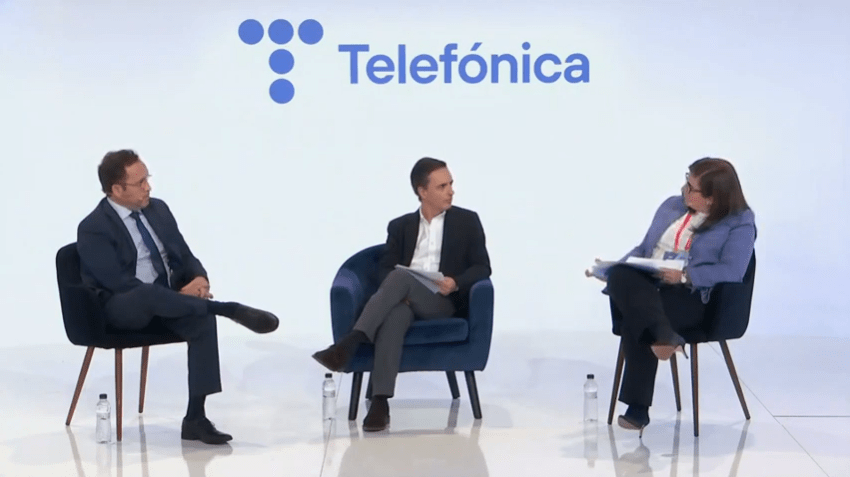The Fourth Industrial Revolution is bringing about profound transformations in economies and societies on a global scale. The COVID-19 pandemic has reinforced the conviction that expanding internet coverage is a necessary, though not sufficient, condition for the progress of our society. In Latin America, the most unequal region of the world, coverage and connectivity can be opportunities to build more sustainable and just societies where no one is left behind.
The obstacles to connecting everyone are disparate. In rural areas, only four in ten Latin Americans have connectivity options, compared to 71% of the population in cities. These imbalances reveal that traditional public policies have fallen short of what is needed.
At Telefónica we are aware of the need to achieve effective digital inclusion, in which the benefits of the new era are enjoyed by everyone. Telefónica’s Rural Manifesto is our proposal for closing the coverage gap.
Alfonso Gómez Palacio, CEO of Telefónica Hispanoamérica, during the session “A Rural Manifesto for Latin America” at the Mobile World Congress 2022. Only available in Spanish.
A proposal for developing inclusive and sustainable rural networks
Reducing the digital divide in Latin America means defining innovative solutions that meet the specific needs of rural areas. Telefónica, therefore, proposes a new model that revolves around three axes: innovation, cooperation and sustainability.
Innovation to grow
Reaching rural and remote areas requires an innovative approach on all fronts – technological, operational, commercial and regulatory – to bridge the access gap once and for all. The use of new technologies such as Artificial Intelligence and Big Data, or solutions such as Open RAN, can make business cases for extending services to rural areas financially viable.
However, there is also an opportunity – and a need – to apply this innovative approach to commercial and operational models for remote areas, designing solutions that fit the specific needs of these areas. Indeed, it is precisely these differential characteristics that need to be considered in the development of regulatory frameworks, so that they do not become a disincentive to network deployment in rural areas. Innovation to regulation should be an enabler and not an obstacle.
Collaboration to move forward more agile
This model aims to meet the challenge of extending coverage in rural areas, which implies the combined efforts of all the agents committed to their development. Time is running against us and the need for collaboration is key and cannot be postponed. It is urgent that public and private initiatives join efforts to connect everyone.
Cooperation between the two areas should extend beyond the provision of telecommunications services, so that connectivity serves as a platform for developing other initiatives in remote areas. We are talking about educational, health, financial or other projects that can be boosted by the availability of connectivity and, in turn, provide a source of income to help the financial sustainability of rural connectivity projects.
Sustainability for the future
Last but not least, coverage needs to be achieved through sustainable business models. The aim is that the possibility to offer access should not depend exclusively on subsidies or extraordinary contributions, but rather they should be financially self-sustainable on the basis of their administrative, operational or commercial characteristics.
As the provision of services in rural areas requires higher levels of investment and operation, business cases must consider agile and low-cost operating models to be viable. Not only through temporary subsidies but considering a reduction of tax and fiscal burdens including the application of tax incentives. The efficient use of resources from universal service funds, the use of already deployed infrastructures, and the reduction of regulatory obligations whose associated costs should be kept to a minimum, will be equally necessary.
The model works
The 3 axes proposed by Telefónica to close the connectivity gap in rural areas are not the result of a merely theoretical exercise, but have already been put into action through previous experiences. This is the case of Internet para Todos (IpT) Peru, born from the alliance between: Telefónica, Facebook and BID Invest and CAF. This project has succeeded in expanding rural connectivity, benefiting more than two and a half million people out of the six million people who lived in areas without Internet coverage in the country.
Nevertheless, we cannot be content. Having proved that financial, commercial and technological disruption is possible and generates very positive results, it is urgent to accompany this progress with public policies that actively contribute to closing the digital divide in rural areas of Latin America, joining public and private efforts.
For these models to develop, we need new public policies focused on five pillars: fostering innovation – financial, regulatory and technological -; encouraging collaboration in infrastructure sharing, competition policies and in the promotion of new models of access and spectrum use; freeing up resources for investment; facilitating infrastructure deployment; and removing technical barriers by fostering technological neutrality.
There is an urgent need to build a different and sustainable path. A path that attracts investment to rural areas, that facilitates innovation in business and technological models, and that favours collaboration in all links of the digital value chain. But, above all, a path that truly places at the centre of the solution the fundamental actors of this process: the people who live, study and work in remote areas of Latin America. Our Rural Manifesto is the first step to achieve this.
